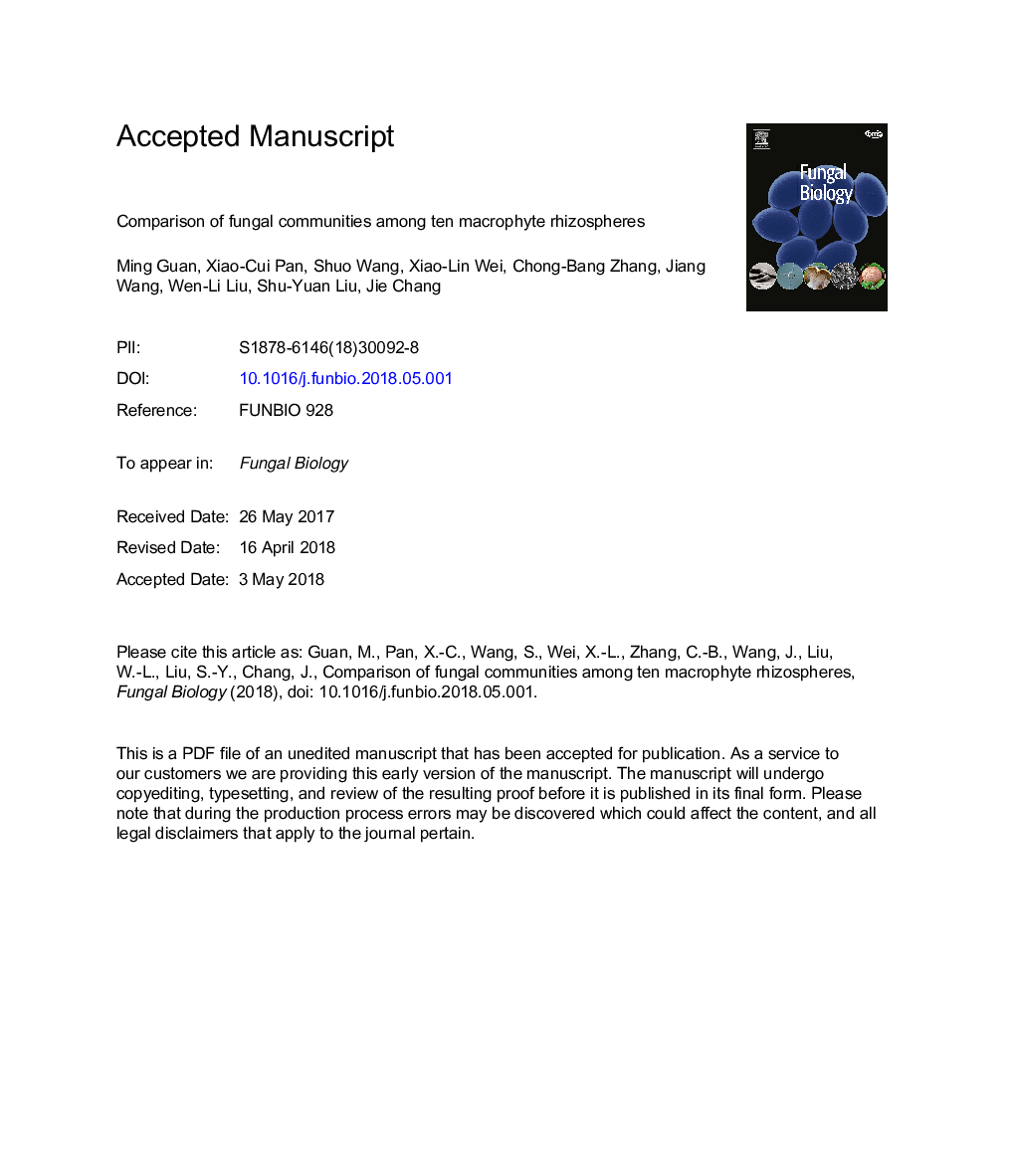| Article ID | Journal | Published Year | Pages | File Type |
|---|---|---|---|---|
| 8842702 | Fungal Biology | 2018 | 38 Pages |
Abstract
The fungal community composition, size and several physico-chemical properties were individually investigated in ten macrophyte rhizospheric substrates using nested PCR-denaturing gradient gel electrophoresis and soil chemical methods. Results indicated that both Dothideomycetes and Sordariomycetes were dominant fungi in macrophyte rhizospheric substrates, and denitrifying fungi (Fusarium graminearum) was found in nine of ten macrophyte rhizospheres. Fungal Shannon-Wiener diversity index (H) and richness (S) in Thalia dealbata, Typha latifolia, Iris hexagona and Hemerocallis aurantiaca rhizospheres were higher than those in other six rhizospheres. Fungal number and biomass were 1.91 Ã 103 CFUs gâ1 dw and 1.53 μg ergosterol gâ1 dw in Iris pseudacor rhizosphere, and were greater than in other nine rhizospheres. The correlation analysis showed that fungal number and biomass significantly and positively correlated to total soil phosphorus, while fungal H and S were significantly and negatively correlated to total organic carbon. The principal components analysis (PCA) showed that the fungal community significantly divided ten macrophyte rhizospheres into four groups, showing the significant difference of fungal communities among ten rhizospheric substrates. The current study revealed for the first time the importance of rhizospheric fungal community in distinguishing macrophyte rhizospheres, thus will undoubtedly widen our insight into fungal communities in aquatic rhizospheres.
Related Topics
Life Sciences
Agricultural and Biological Sciences
Agricultural and Biological Sciences (General)
Authors
Ming Guan, Xiao-Cui Pan, Shuo Wang, Xiao-Lin Wei, Chong-Bang Zhang, Jiang Wang, Wen-Li Liu, Shu-Yuan Liu, Jie Chang,
